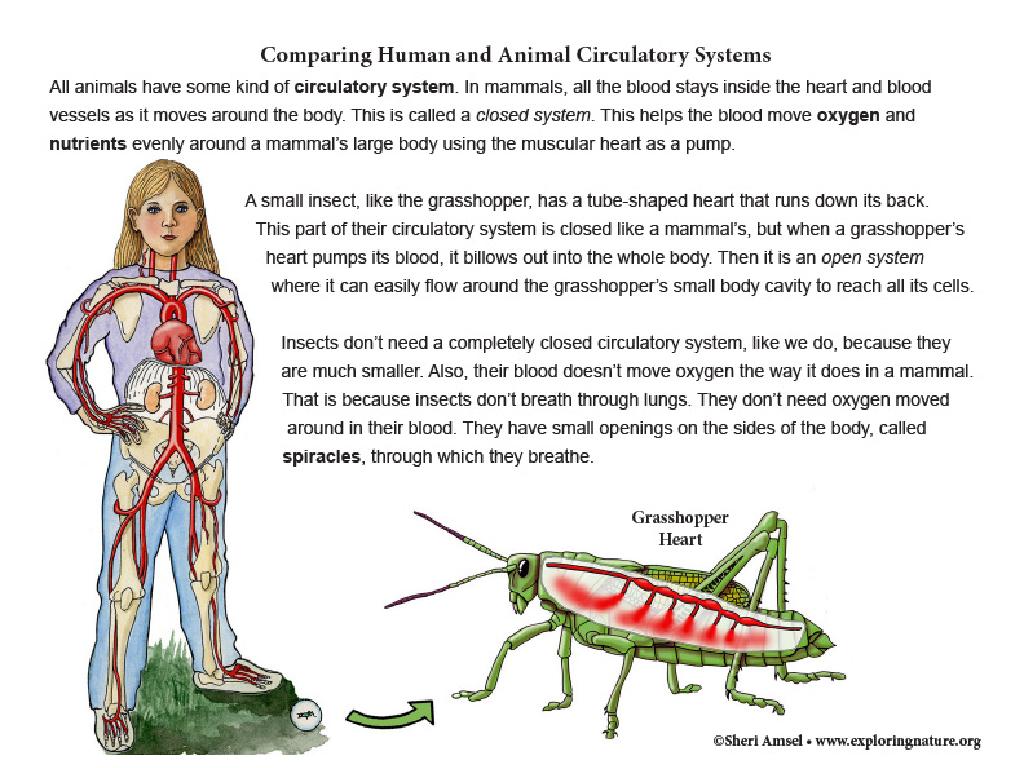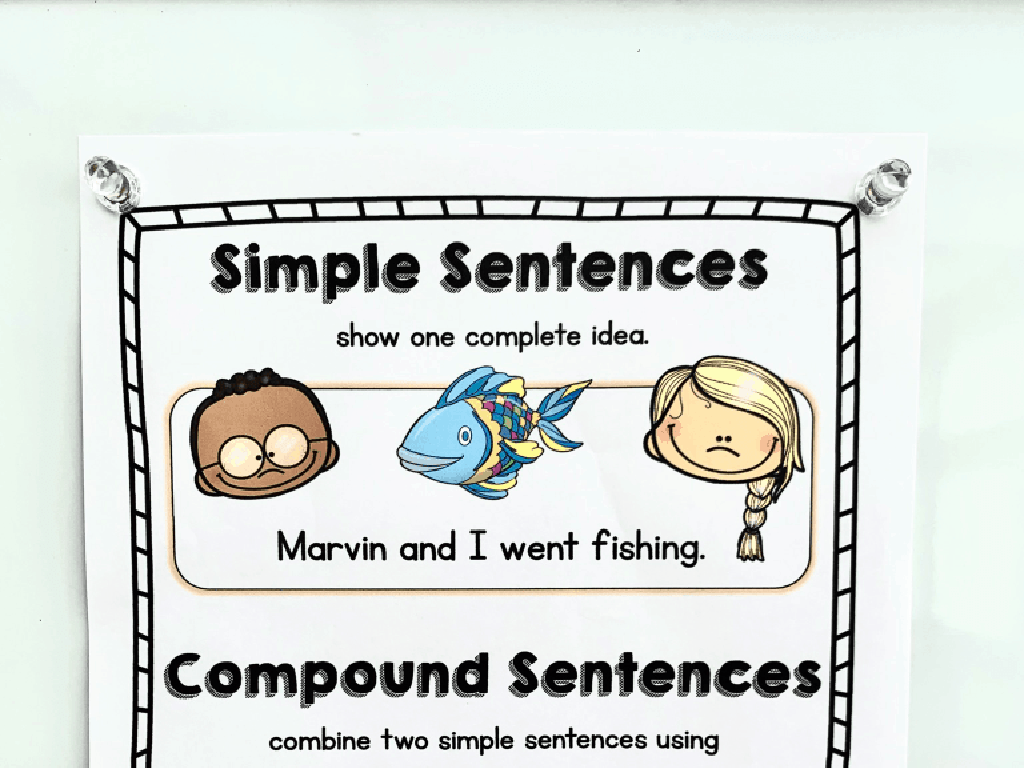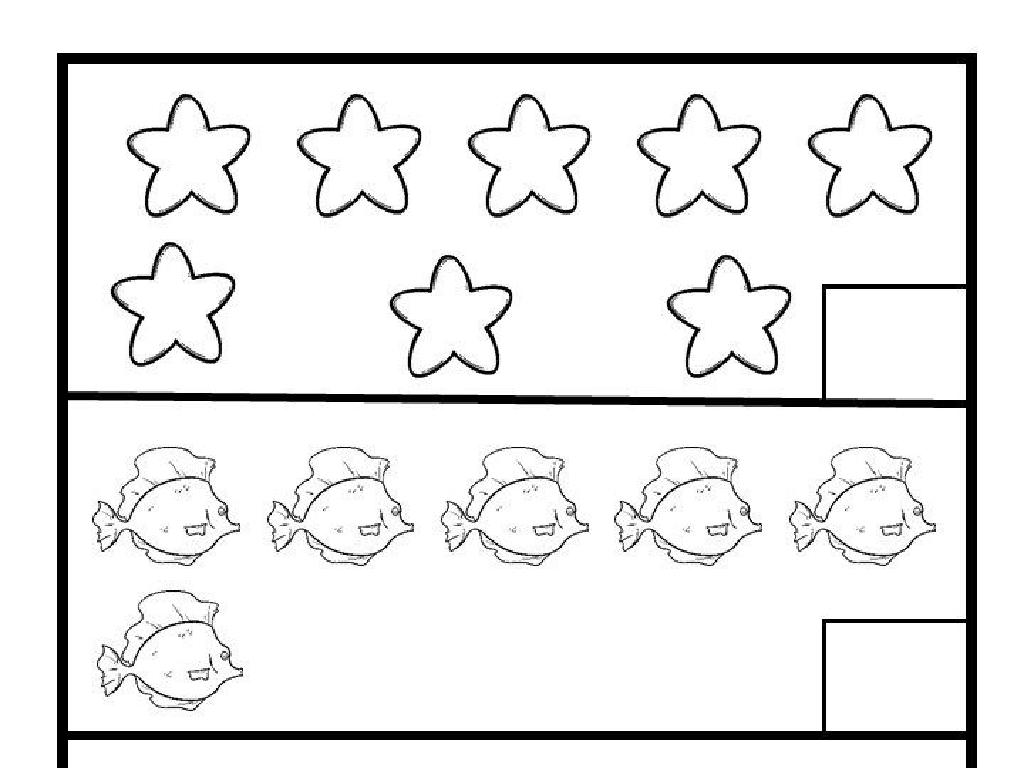Understanding Ratios
Subject: Math
Grade: Seventh grade
Topic: Ratios, Rates, And Proportions
Please LOG IN to download the presentation. Access is available to registered users only.
View More Content
Welcome to Ratios!
– Understanding Ratios: Math’s Building Blocks
– Defining What Ratios Are
– A ratio shows the relative sizes of two or more values.
– The Significance of Ratios in Real Life
– Ratios are everywhere: cooking recipes, maps, and even sports!
– Exploring Ratios Through Examples
– For instance, recipe ingredient adjustments or scale models.
|
This slide introduces the concept of ratios, a fundamental component of mathematics that students will encounter in various real-life situations. Begin by explaining that ratios are a way to compare quantities and measure their relationship. Emphasize the prevalence of ratios in everyday life, such as in cooking, where they determine the proportion of ingredients, or in map reading, where they help understand scale. Provide clear examples to illustrate the concept, such as adjusting a recipe for a different number of servings or comparing the number of wins and losses for a sports team. Encourage students to think of ratios as a tool that helps make sense of the world around them.
What is a Ratio?
– Definition of a ratio
– A comparison of two quantities showing the relative size of one to the other.
– Ratio terms and notation
– Terms like ‘to’, ‘per’, and notation like 3:1, 3 to 1, or 3/1.
– Ratios in everyday life
– Recipes, maps, and mixing colors are common examples.
– Practice with real examples
|
Introduce the concept of ratios as a foundational element in understanding relationships between two quantities. Explain that ratios can be written in various forms but always represent a comparison. Use everyday examples to illustrate ratios in a context familiar to students, such as ingredients in a recipe (e.g., 2 cups of flour to 1 cup of sugar), distances on a map, or proportions when mixing colors. Encourage students to think of other examples from their daily lives. Provide practice problems where students can apply their understanding of ratios to reinforce the concept.
Writing Ratios: Different Formats
– Ratios express comparison
– Three formats: fractions, colons, words
– Example: 1/2, 1:2, or ‘one to two’
– Converting between formats
– Change 1/2 to 1:2 or ‘one to two’
– Let’s practice with examples
– Work through practice problems together
|
This slide introduces students to the concept of ratios and the different ways they can be written. Start by explaining that ratios are a way to compare two quantities. Show how the same ratio can be expressed using fractions (1/2), colons (1:2), or words (‘one to two’). Demonstrate how to convert ratios from one format to another, ensuring to provide clear steps. Engage the class with practice examples, encouraging them to try converting ratios between different formats. This will help solidify their understanding and prepare them for more complex problems involving ratios.
Understanding Equivalent Ratios
– Defining equivalent ratios
– Ratios with the same relationship between numbers
– Multiplication & division to find equivalents
– Multiply or divide both terms of a ratio by the same number
– Real-world equivalent ratio examples
– Recipes, map scales, and buy-one-get-one deals
– Practice with equivalent ratios
|
This slide introduces the concept of equivalent ratios, which are two ratios that express the same relationship between numbers. To find an equivalent ratio, students can multiply or divide both terms of the original ratio by the same non-zero number. Provide real-world examples such as adjusting a recipe, understanding a map scale, or evaluating a buy-one-get-one-free sale to illustrate the concept. Encourage students to practice finding equivalent ratios with different numbers to solidify their understanding. The goal is for students to recognize equivalent ratios in various contexts and to use multiplication and division as tools to find them.
Ratios in Action: Problem Solving
– Solve problems using ratios
– Use ratio language to describe relationships between quantities in real-world problems.
– Ratios in recipes and solutions
– Understand how ratios are used in cooking to mix ingredients or in science to mix solutions.
– Interactive: Mixing paint colors
– Example: What ratio of red to blue paint will you use to make purple?
|
This slide aims to show practical applications of ratios in everyday life. Start by explaining how ratios help solve problems by comparing quantities. Use examples like recipes, where ratios determine the proportion of ingredients, or in science, where they dictate the concentration of solutions. For the interactive example, engage students with a hands-on activity where they mix paint colors using different ratios to see how it affects the resulting color. This will help them visualize the concept of ratios and understand their significance in a fun and memorable way. Encourage students to think critically about the ratios they use and to experiment with different combinations to see the varied outcomes.
Solving Ratio and Proportion Problems
– Setting up proportions from ratios
– Use equivalent ratios to form a proportion, e.g., if 2/3 = x/6, find x.
– Step-by-step guide to solve proportions
– Identify the means and extremes, cross-multiply, and solve for the unknown.
– Class practice: Work on proportions
– We’ll solve example problems as a class to reinforce the concept.
– Understand ratio and proportion relation
– Grasp how ratios are the building blocks of proportions.
|
This slide introduces students to the concept of solving ratio problems by setting up proportions. Start by explaining how to create a proportion from a given ratio by finding an equivalent ratio. Then, provide a clear, step-by-step guide on how to solve for the unknown in a proportion, including cross-multiplication. During class practice, present several problems for the students to solve together, fostering a collaborative learning environment. Emphasize the relationship between ratios and proportions, ensuring students understand that a proportion is an equation that shows two ratios are equivalent. The notes should guide the teacher through the process, offering tips on how to explain each step and how to engage students in the practice activity. Include 4-5 different practice problems for variety and to cater to different learning paces.
Class Activity: Ratio Scavenger Hunt
– Find classroom ratios
– Pair up for discovery
– Discuss your findings
– How do your ratios relate to each other? Can you explain why?
– Present to the class
|
This interactive activity is designed to help students apply their understanding of ratios to real-life objects and scenarios within the classroom. Students should work in pairs to foster collaboration. They will look for examples of ratios around the classroom, such as the number of windows to doors, or the number of student desks to teacher desks. After discovering various ratios, they should discuss with their partner why these ratios might exist and what they could mean. Each pair will then prepare a short presentation to share their findings with the class, explaining the significance of the ratios they found. As a teacher, facilitate the activity by providing guidance on what types of ratios to look for and how to present their findings effectively. Possible activities could include comparing quantities of supplies, analyzing patterns in floor tiles, or measuring items to find proportional relationships.
Conclusion: Ratios in Everyday Life
– Recap of ratio concepts
– Significance of ratios in daily life
– Ratios help compare quantities and make informed decisions.
– Homework: Discover ratios at home
– Find 3 ratios around your house, like ingredients in a recipe or the number of windows to doors.
– Be prepared to discuss your findings
– Share how you found them and why they’re important.
|
As we wrap up today’s lesson on ratios, it’s crucial for students to understand that ratios are not just a mathematical concept but a tool used in everyday life to compare quantities, such as in cooking or budgeting. For homework, students are tasked to find and write down three examples of ratios from their home environment. This could be anything from the number of chairs to people in their house, to the amount of pet food given in relation to the pet’s weight. Encourage them to think creatively and be ready to discuss how they found these ratios and their significance. This exercise will help solidify their understanding of ratios and how to apply them in real-world situations.






